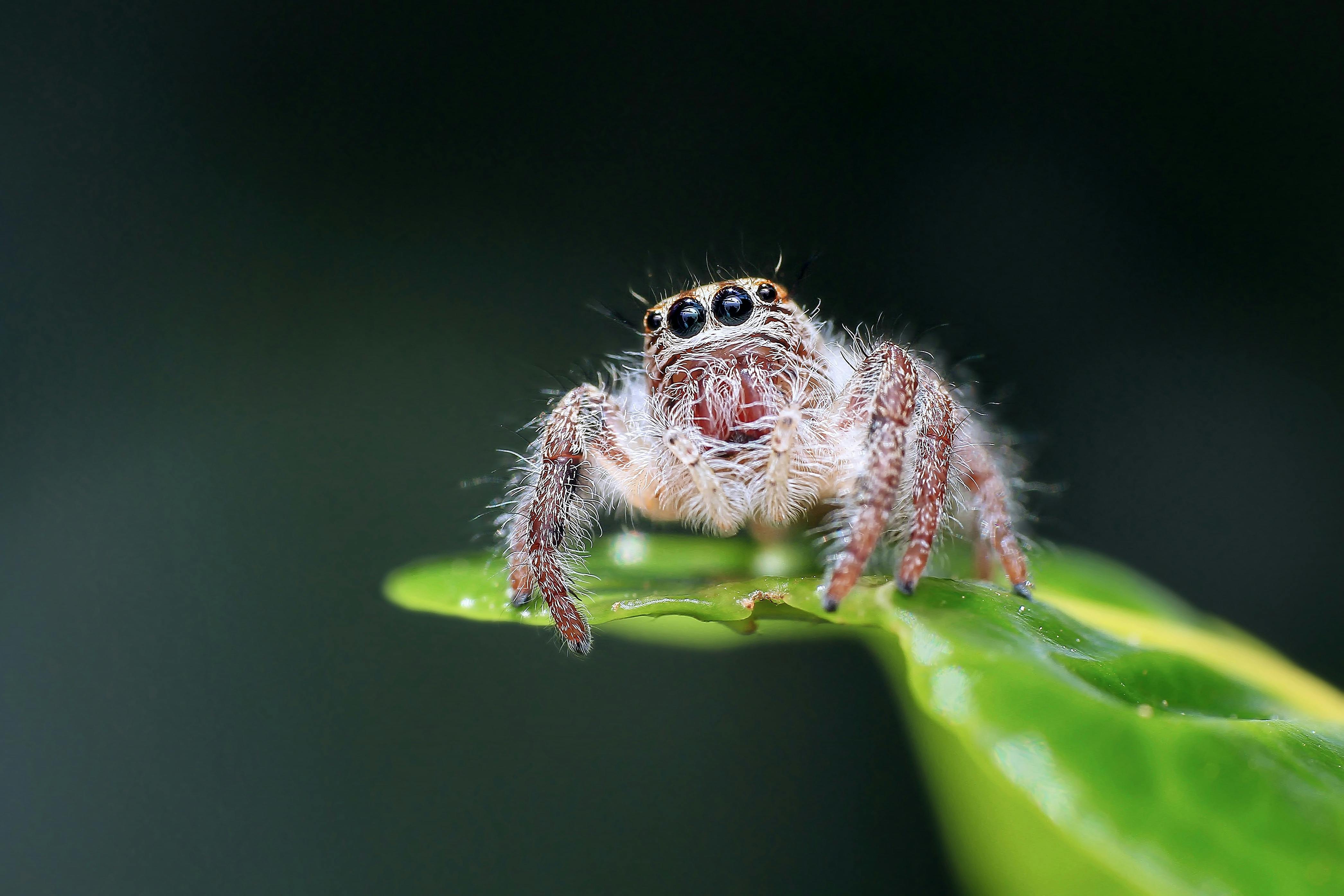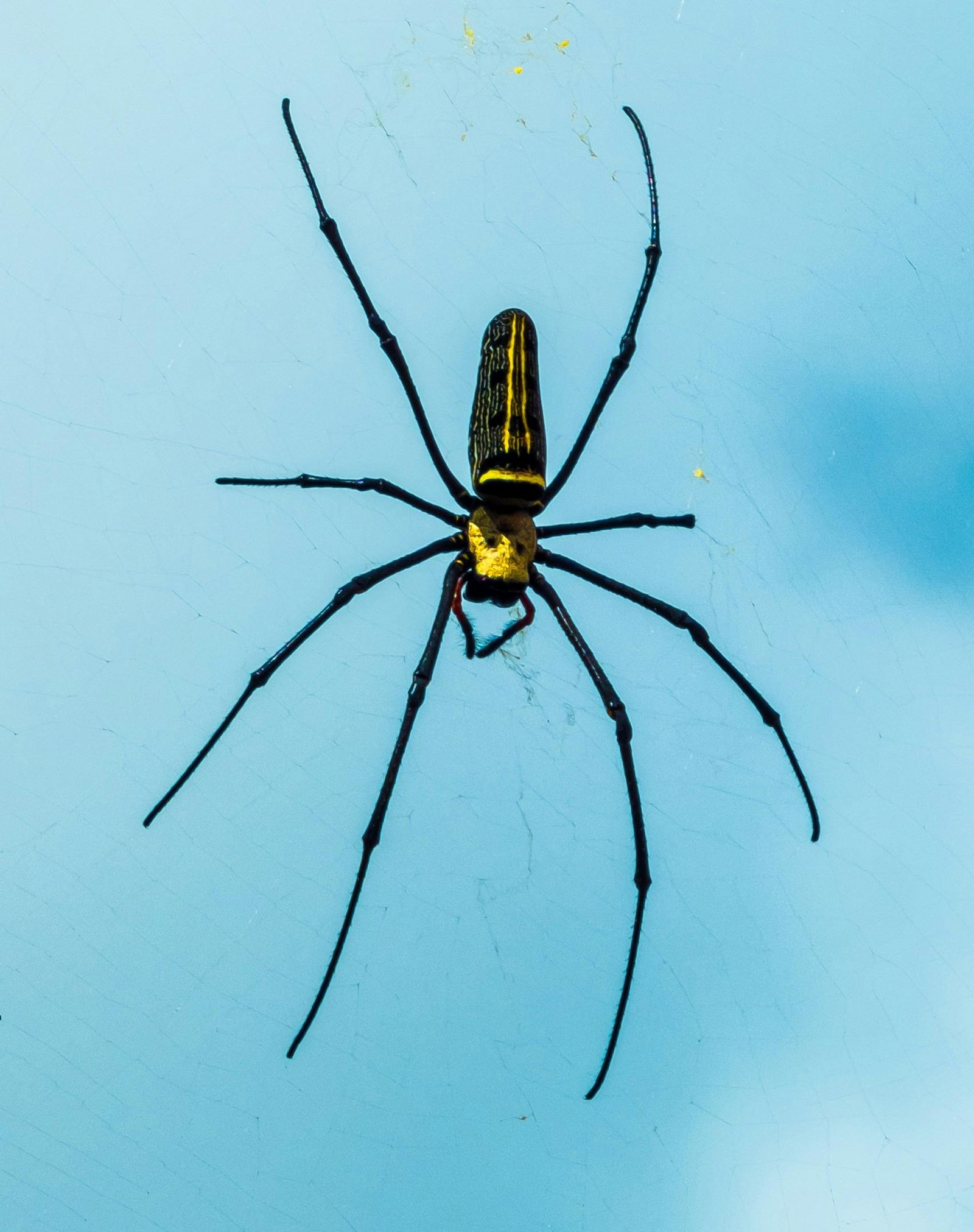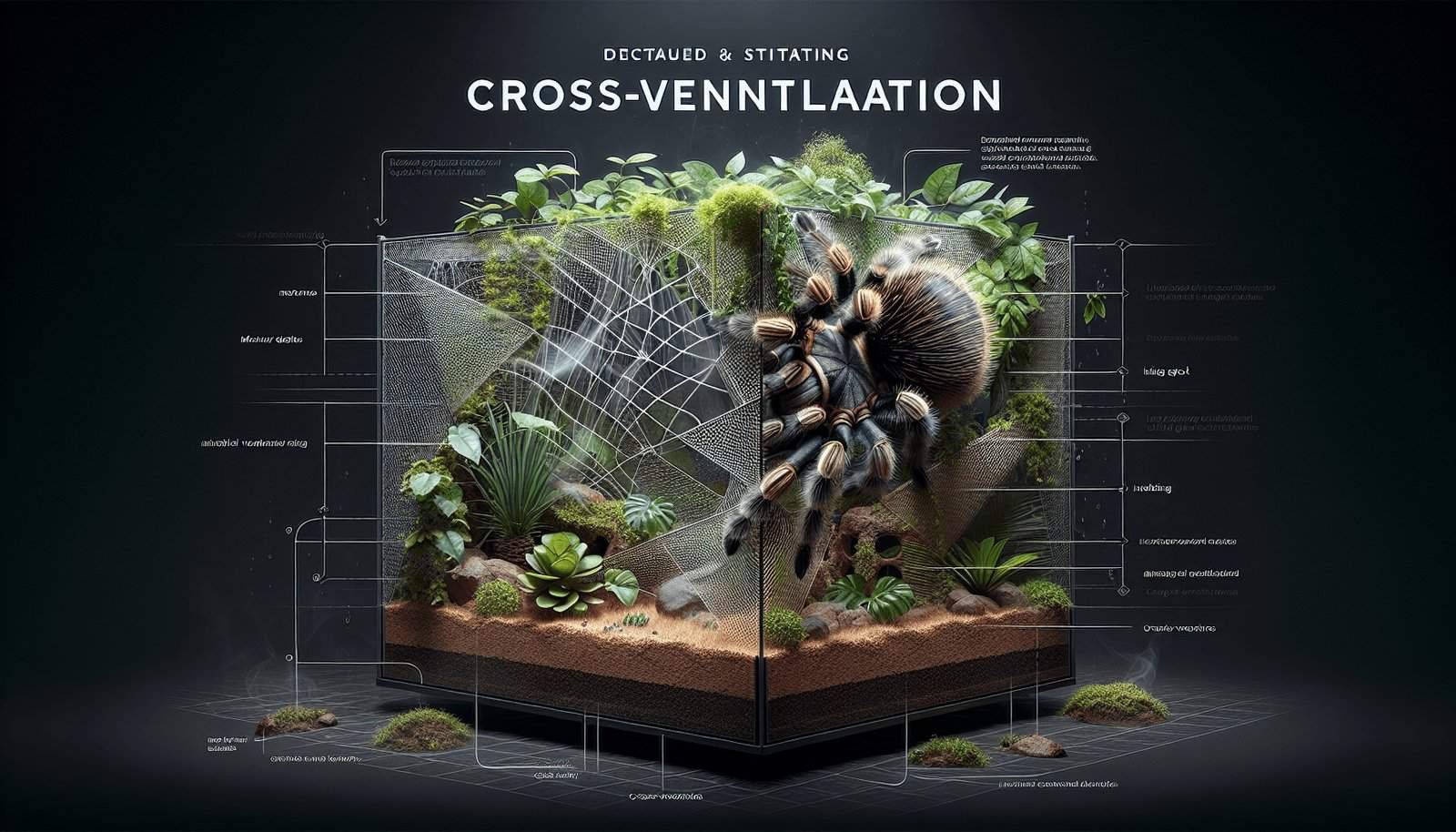Have you ever wondered if tarantulas can be kept in enclosures with cross-ventilation? If you’re a tarantula owner or considering becoming one, this question may have crossed your mind. The ventilation in a tarantula’s enclosure plays a crucial role in their overall well-being, and ensuring they have the right environment is essential for their health and happiness. In this article, we will explore the topic of whether or not tarantulas can thrive in enclosures with cross-ventilation and discuss the potential benefits and considerations to keep in mind when creating their living space.

Introduction
Keeping tarantulas as pets has become increasingly popular in recent years. These fascinating creatures are known for their unique physical characteristics, intricate behavioral patterns, and diverse habitat preferences. When it comes to creating the perfect enclosure for your tarantula, one of the key considerations is ventilation. The debate on whether cross-ventilation is suitable for tarantula enclosures has sparked controversy among tarantula keepers and enthusiasts. In this article, we will delve into the characteristics of tarantulas, the importance of proper enclosures, the concept of cross-ventilation, arguments for and against it, and alternative ventilation methods. By the end, you will have a comprehensive understanding of the ideal tarantula enclosure and how to best provide for the needs of your eight-legged friend.
Understanding Tarantulas
Physical characteristics
Tarantulas are known for their large size, hairy bodies, and intimidating appearance. They come in a wide array of colors, patterns, and species, each with its own unique charm. While the exact size and physical characteristics vary depending on the species, tarantulas generally have eight legs, two pedipalps, and fangs. Their bodies are divided into two main parts: the cephalothorax and the abdomen. Understanding these physical features is crucial for creating an appropriate enclosure that caters to their specific needs.
Habitat preferences
Tarantulas have diverse habitat preferences, ranging from tropical rainforests to arid deserts. Some species prefer humid environments, while others thrive in drier conditions. Researching the specific needs of your tarantula’s species is essential to create an enclosure that mimics its natural habitat. Temperature, humidity levels, and substrate choices are all crucial factors to consider when recreating the perfect environment for your tarantula.
Behavioral characteristics
Tarantulas are generally solitary creatures, preferring to live alone rather than with others of their kind. They are also nocturnal, meaning they are most active during the night. Tarantulas exhibit various behavioral characteristics, including burrowing, web-spinning, and hunting. Understanding these behaviors is vital when designing an enclosure that allows them to express their natural instincts.

The Importance of Proper Enclosures
Maintaining an appropriate environment
Creating an appropriate environment within the enclosure is crucial for the overall health and well-being of your tarantula. Proper temperature and humidity control, suitable substrate choices, and ample hiding places are all essential aspects to consider. Failure to provide the right conditions can lead to stress, dehydration, and even death for your tarantula.
Preventing escape
One of the primary concerns when designing a tarantula enclosure is preventing escape. Tarantulas are surprisingly agile and can squeeze through tiny cracks or gaps. An enclosure with proper ventilation that eliminates any potential escape routes is necessary to ensure the safety and security of your pet.
Minimizing stress
Stress can have detrimental effects on a tarantula’s health. Adequate ventilation plays a vital role in reducing stress by regulating temperature and humidity levels, preventing the buildup of harmful gases, and promoting fresh air circulation. A stressed tarantula may exhibit abnormal behavior, refuse to eat, or even become aggressive. Providing a stress-free environment is crucial for the overall well-being of your pet.
Defining Cross-Ventilation
What is cross-ventilation?
Cross-ventilation refers to the process of creating air circulation within an enclosure by allowing fresh air to enter from one side and exit from another. It involves strategically positioning openings or vents to facilitate the flow of air. The aim of cross-ventilation is to maintain optimal temperature and humidity levels while minimizing the risk of stagnant air, mold, or excessive moisture.
Benefits and drawbacks
Cross-ventilation offers several benefits for tarantula enclosures. It helps control temperature and humidity levels, promotes fresh air circulation, and can aid in preventing the buildup of harmful gases. However, there are also potential drawbacks to consider. Cross-ventilation may create potential escape routes for your tarantula, allow pests to enter the enclosure, or expose your pet to drafts. Weighing these benefits and drawbacks is essential before deciding on the type of ventilation system for your tarantula’s enclosure.

Arguments for Cross-Ventilation
Enhancing air circulation
Cross-ventilation aids in enhancing air circulation within the tarantula enclosure. It promotes the exchange of stale air with fresh air, preventing the buildup of harmful gases such as carbon dioxide. Adequate air circulation is essential for maintaining a healthy environment and reducing the risk of respiratory issues.
Controlling humidity levels
Regulating humidity levels is crucial for the well-being of tarantulas, as they have specific requirements depending on their natural habitat. Cross-ventilation helps to control humidity by allowing excess moisture to escape while enabling fresh air to enter. This ensures that the enclosure remains within the ideal humidity range for your tarantula’s species.
Reducing the risk of respiratory issues
Stagnant air and excessive moisture can lead to respiratory issues in tarantulas. Cross-ventilation helps to minimize these risks by promoting fresh air exchange and preventing the buildup of excess humidity. By ensuring a well-ventilated enclosure, you can reduce the chances of your tarantula developing respiratory problems.
Arguments Against Cross-Ventilation
Potential escape routes
One of the primary concerns with cross-ventilation is the potential for escape. Tarantulas are agile climbers and can exploit even the tiniest gaps or openings to make their way out of the enclosure. If the ventilation system is not carefully designed, it may inadvertently provide an escape route for your tarantula, increasing the risk of losing your pet.
Introduction of unwanted pests
Cross-ventilation may also introduce unwanted pests into the tarantula enclosure. Small insects or parasites can pass through the openings and infest the environment, potentially causing harm to your tarantula. Proper precautions must be taken to ensure that the ventilation system effectively filters out any unwanted visitors.
Increased exposure to drafts
Excessive exposure to drafts can be harmful to tarantulas, as they are sensitive to sudden temperature changes. Cross-ventilation may increase the potential for drafts within the enclosure, potentially leading to stress or health issues for your tarantula. Careful consideration must be given to the placement and size of the openings to minimize the risk of drafts.

The Ideal Tarantula Enclosure
Proper size and dimensions
The ideal tarantula enclosure should provide ample space for your pet to move around comfortably. The size and dimensions of the enclosure will depend on the species of tarantula you own. Researching the specific requirements of your tarantula’s species is crucial to ensure their needs are met adequately.
Substrate and hiding places
Choosing the right substrate is essential for recreating a natural habitat within the enclosure. Tarantulas require a substrate that allows for burrowing and provides moisture retention if needed. Additionally, providing adequate hiding places, such as hollow logs or plant foliage, allows your tarantula to feel secure in its enclosure.
Temperature and humidity control
Maintaining the appropriate temperature and humidity levels within the enclosure is crucial for the well-being of your tarantula. This can be achieved through various means, such as using heat mats, thermostats, misting systems, or specific humidifiers designed for tarantula enclosures. Monitoring these conditions regularly ensures that your tarantula remains comfortable and healthy.
Alternative Ventilation Methods
Vents and mesh screens
Vents and mesh screens are commonly used in tarantula enclosures to promote airflow without compromising security. These barriers allow for air circulation while keeping unwanted pests out. Properly designed vents and mesh screens can provide an effective ventilation solution that minimizes the risks associated with cross-ventilation.
Ventilation fans
In some cases, ventilation fans can be installed in tarantula enclosures to enhance air circulation. These fans help maintain optimal temperature and humidity levels while preventing stagnant air. However, it is important to ensure that the fans are not too powerful or create excessive drafts, which can be detrimental to your tarantula’s health.
Strategically placed air holes
Strategically placed air holes can be another alternative ventilation method for tarantula enclosures. These small openings allow for fresh air exchange while minimizing the risk of escape and unwanted pests. Careful consideration must be given to the size and positioning of the air holes to ensure proper ventilation and the safety of your tarantula.

Case Studies and Expert Opinions
Experiences of tarantula keepers
Numerous tarantula keepers have shared their experiences with cross-ventilation in tarantula enclosures. While some have found success with this ventilation method, others have encountered challenges or concerns. It is crucial to consider a range of experiences and gather insights from experienced tarantula keepers to make an informed decision for your own pet.
Advice from reputable sources
Reputable sources, such as arachnologists and experienced tarantula breeders, can provide valuable advice when it comes to tarantula enclosures and ventilation. These experts understand the specific needs and behaviors of tarantulas and can offer insights into the most suitable ventilation methods for various species. Consulting with these sources can help ensure the well-being of your tarantula.
Conclusion
When it comes to tarantula enclosures, ventilation plays a vital role in maintaining the health and well-being of these unique creatures. Cross-ventilation offers benefits such as enhanced air circulation, controlled humidity levels, and reduced respiratory risks. However, it also poses potential drawbacks, including escape risks, pest infiltration, and drafts. The ideal enclosure for your tarantula requires careful consideration of its physical and behavioral characteristics, proper temperature and humidity control, and the use of suitable ventilation methods. By understanding the needs of your tarantula and weighing the arguments for and against cross-ventilation, you can create an enclosure that provides a safe and comfortable home for your eight-legged friend. Remember to consult experienced tarantula keepers and reputable sources for guidance, ensuring that you are well-informed in creating the ideal environment for your tarantula’s unique requirements.
